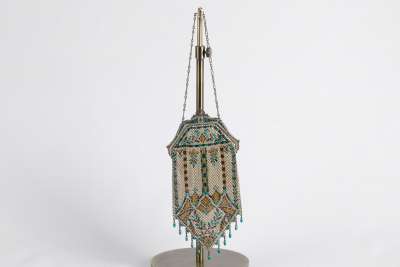The American reverse intaglio Scottie dog glass buttons. Circa 1950's
The American reverse intaglio Scottie dog buttons have been meticulously carved in reverse and then painted, likely by hand, to reveal the details of the dogs and the grass they are standing on.
The left button features the intaglio carving within a clear glass dome, which magnifies the details of the white and black Scottie dog with a red collar and the green grass at its feet. The metal frame surrounding the glass is ornate with a filigree design, adding an elegant touch to the button.
The right button showcases the same reverse intaglio technique. The image of the Scottie dog stands out sharply against the off-white background of the button, and this button also shows depth and detail in the portrayal of the dog and its surroundings.
Condition Report: Good, with wear consistent with age and use.
Dimensions: Weight .020gms, Length Right Button 3.5cm Left Button 3.5cm, Width Right Button 3cm, Left Button 3cm













